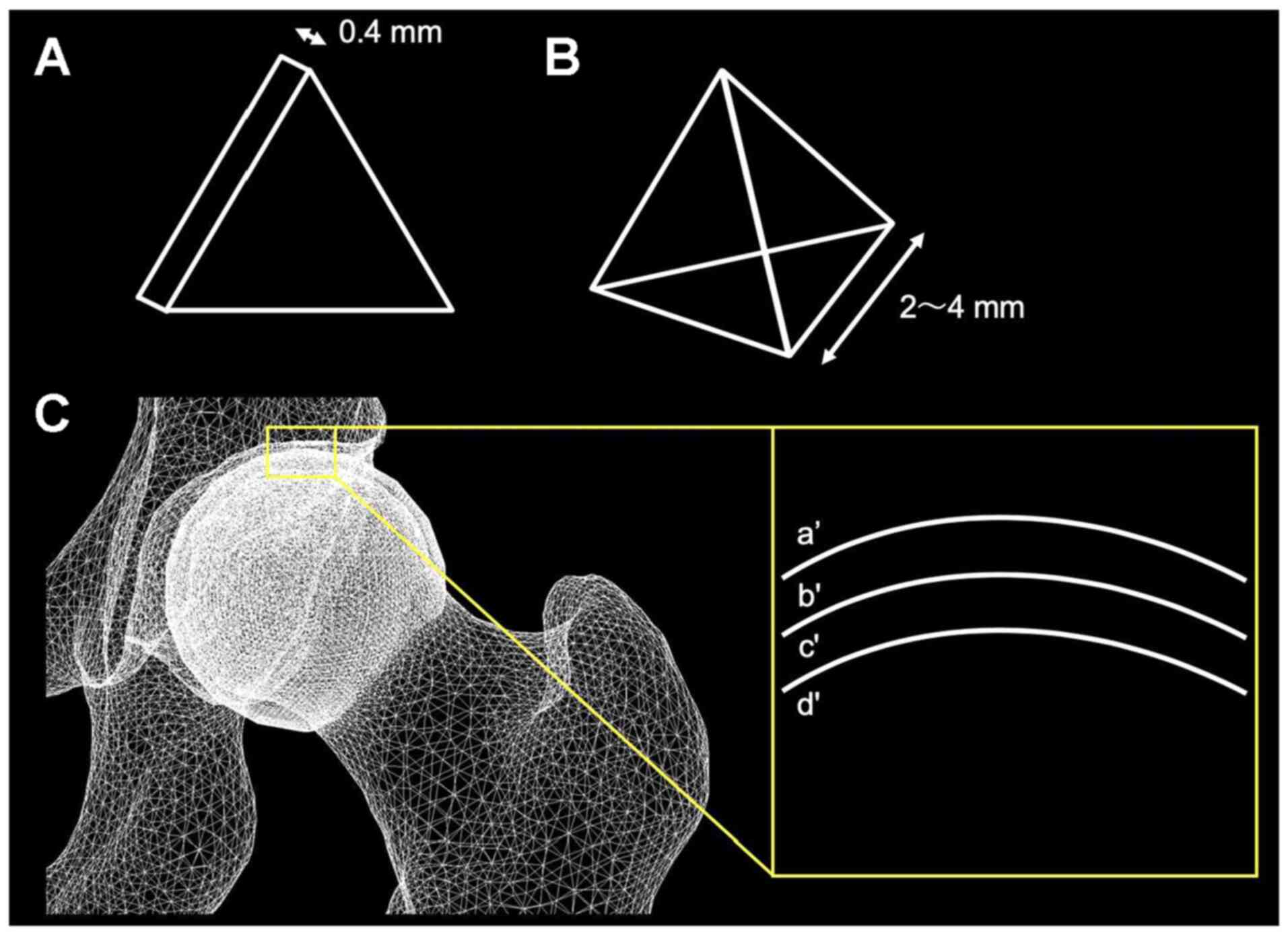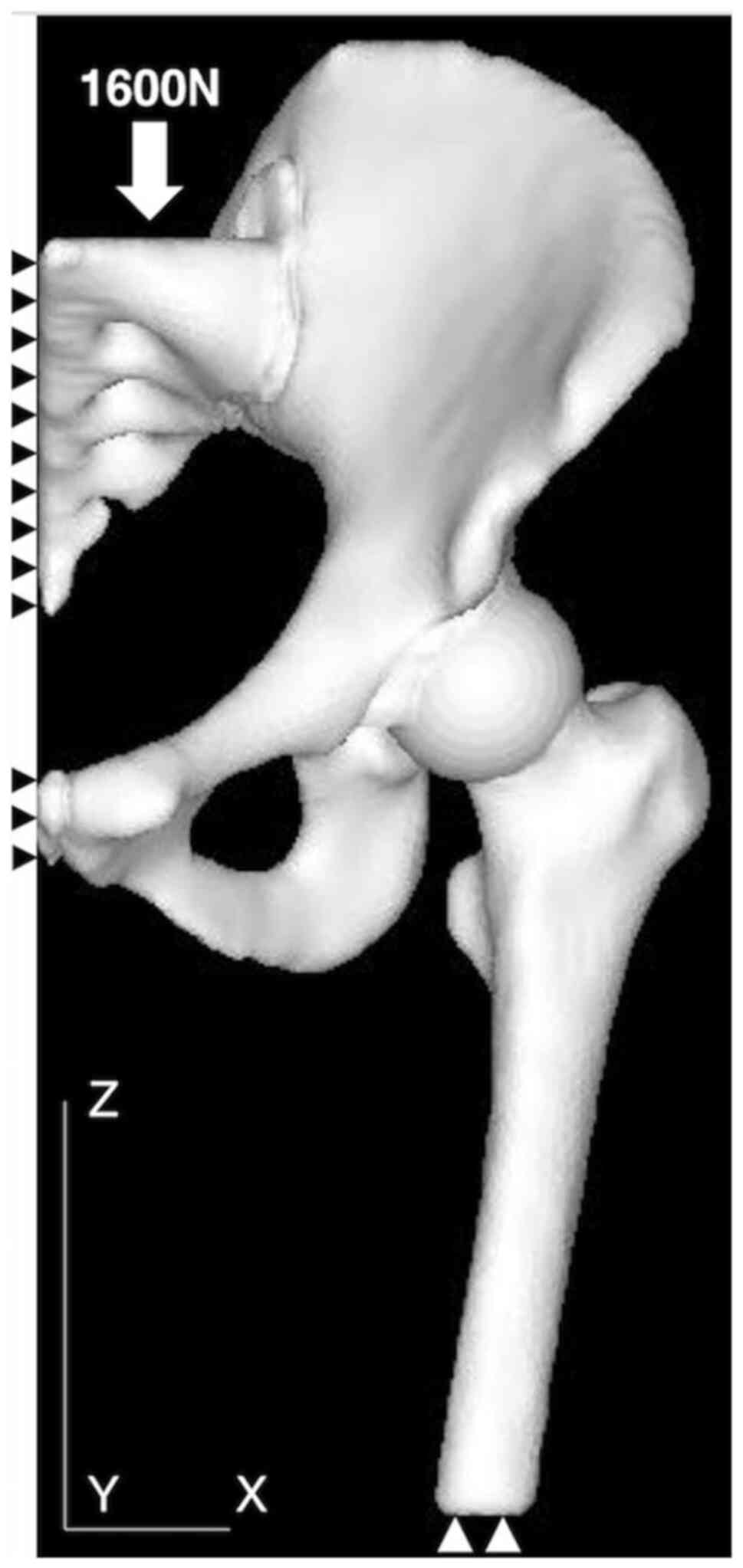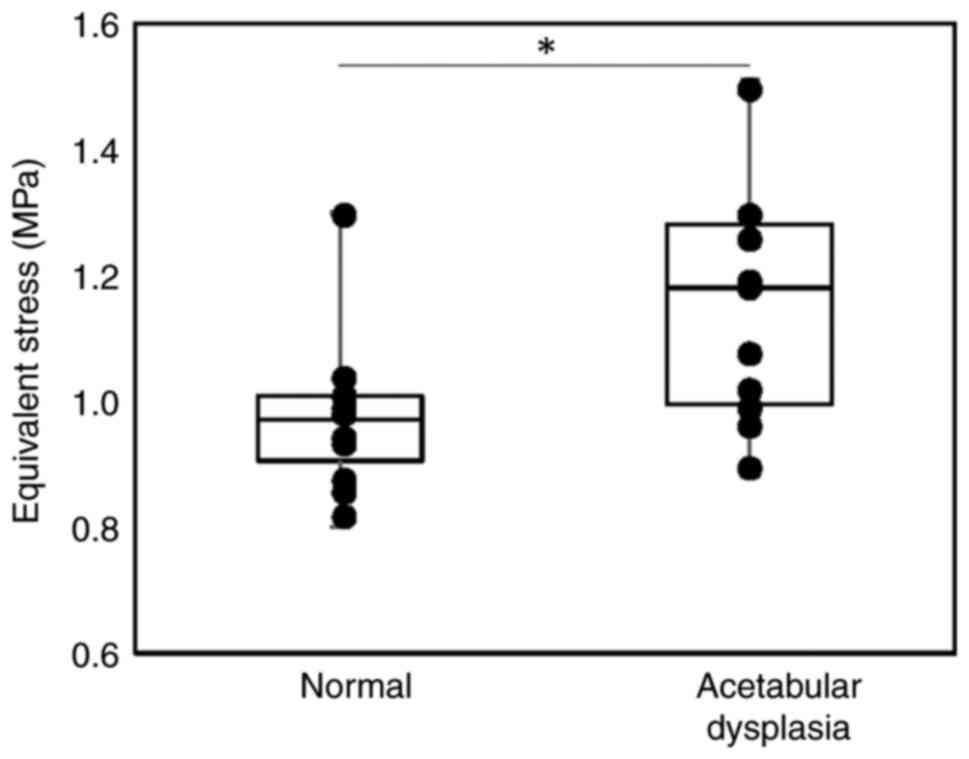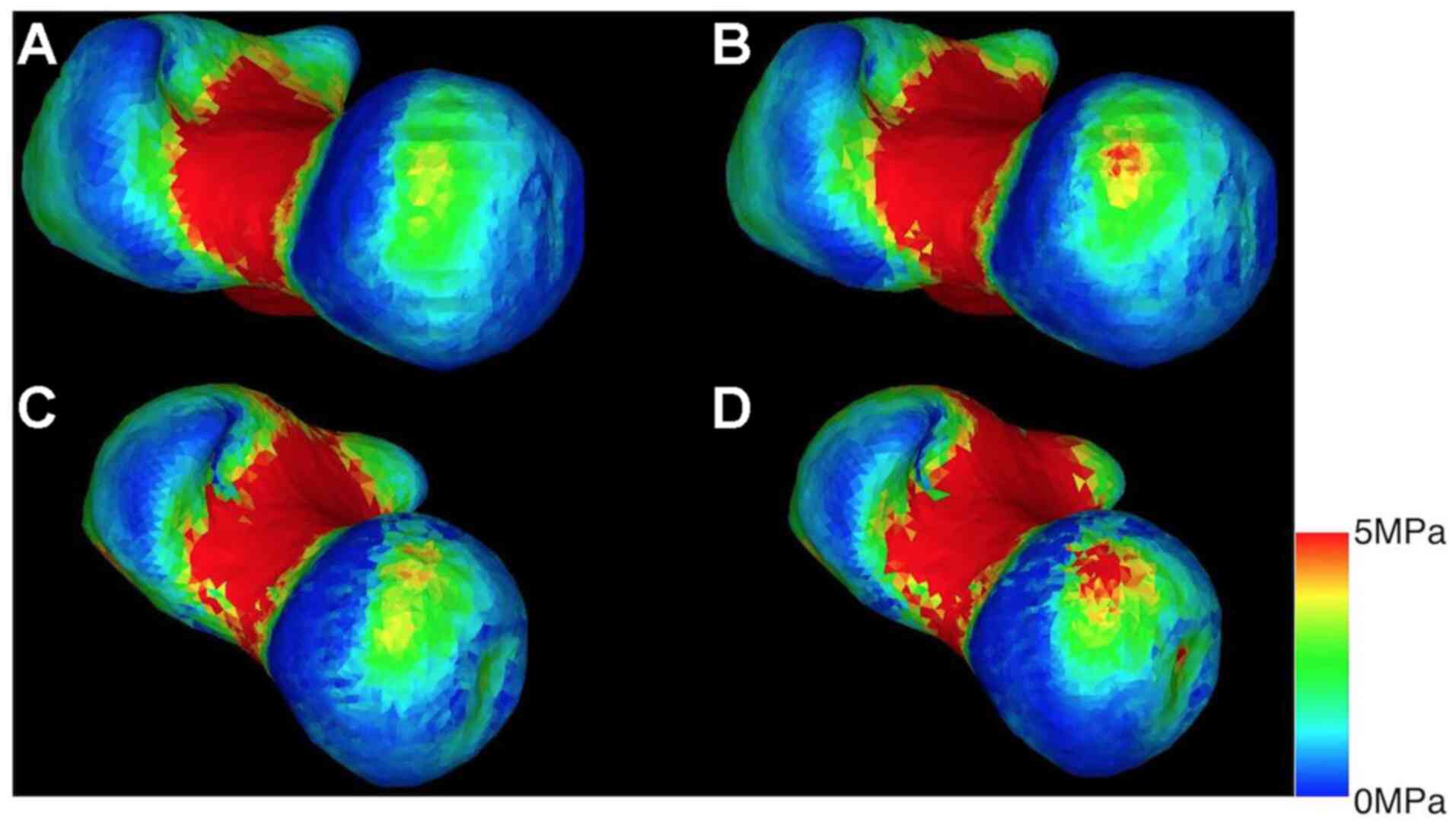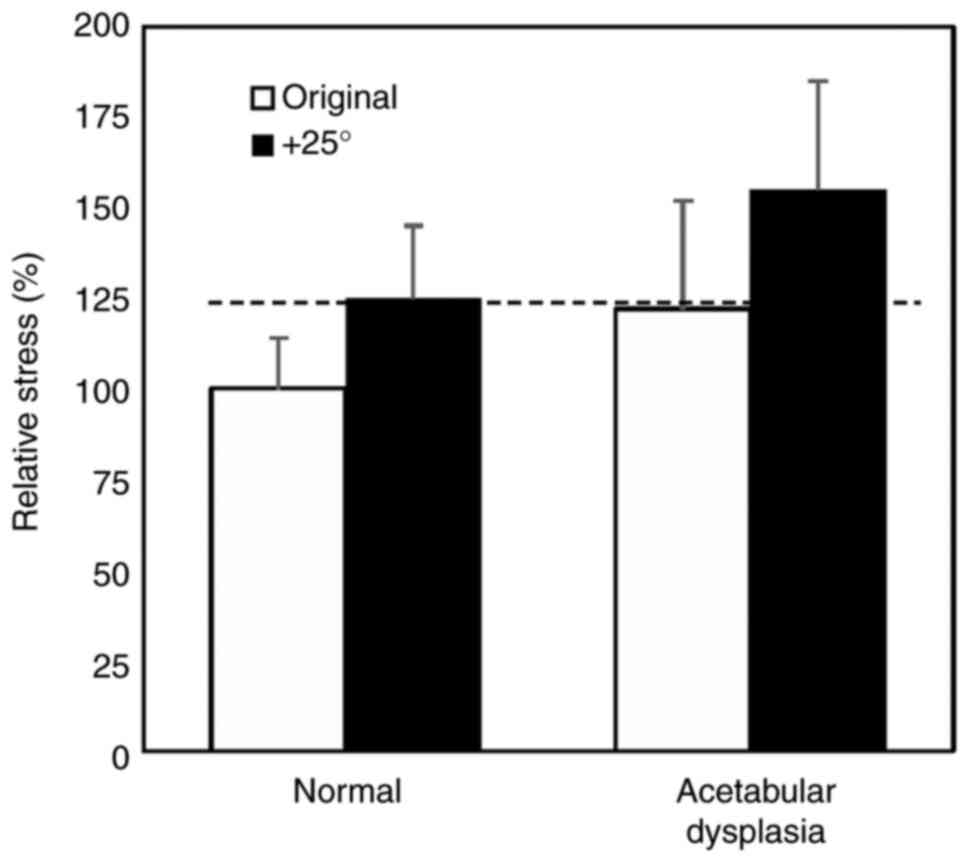|
1
|
Sun HB: Mechanical loading, cartilage
degradation, and arthritis. Ann N Y Acad Sci. 1211:37–50.
2010.PubMed/NCBI View Article : Google Scholar
|
|
2
|
Chen C, Tambe DT, Deng L and Yang L:
Biomechanical properties and mechanobiology of the articular
chondrocyte. Am J Physiol Cell Physiol. 305:1202–1208.
2013.PubMed/NCBI View Article : Google Scholar
|
|
3
|
Lievense AM, Bierma-Zeinstra SM, Verhagen
AP, van Baar M, Verhaar JA and Koes BW: Influence of obesity on the
development of osteoarthritis of the hip: A systematic review.
Rheumatology (Oxford). 41:1155–1162. 2002.PubMed/NCBI View Article : Google Scholar
|
|
4
|
Lievense A, Bierma-Zeinstra S, Verhagen A,
Verhaar J and Koes B: Influence of work on the development of
osteoarthritis of the hip: A systematic review. J Rheumatol.
28:2520–2528. 2001.PubMed/NCBI
|
|
5
|
Weinstein SL: Natural history of
congenital hip dislocation (CDH) and hip dysplasia. Clin Orthop
Relat Res. 62–76. 1987.PubMed/NCBI
|
|
6
|
Reijman M, Hazes JM, Pols HA, Koes BW and
Bierma-Zeinstra SM: Acetabular dysplasia predicts incident
osteoarthritis of the hip: The Rotterdam study. Arthritis Rheum.
52:787–793. 2005.PubMed/NCBI View Article : Google Scholar
|
|
7
|
Ishidou Y, Matsuyama K, Sakuma D,
Setoguchi T, Nagano S, Kawamura I, Maeda S and Komiya S:
Osteoarthritis of the hip joint in elderly patients is most
commonly atrophic, with low parameters of acetabular dysplasia and
possible involvement of osteoporosis. Arch Osteoporos.
12(30)2017.PubMed/NCBI View Article : Google Scholar
|
|
8
|
Lane NE, Nevitt MC, Cooper C, Pressman A,
Gore R and Hochberg M: Acetabular dysplasia and osteoarthritis of
the hip in elderly white women. Ann Rheum Dis. 56:627–630.
1997.PubMed/NCBI View Article : Google Scholar
|
|
9
|
Ailon T, Shaffrey CI, Lenke LG, Harrop JS
and Smith JS: Progressive spinal kyphosis in the aging population.
Neurosurgery. 77 (Suppl 4):S164–S172. 2015.PubMed/NCBI View Article : Google Scholar
|
|
10
|
Kasukawa Y, Miyakoshi N, Hongo M, Ishikawa
Y, Kudo D, Suzuki M, Mizutani T, Kimura R, Ono Y and Shimada Y:
Age-related changes in muscle strength and spinal kyphosis angles
in an elderly Japanese population. Clin Interv Aging. 12:413–420.
2017.PubMed/NCBI View Article : Google Scholar
|
|
11
|
Barrey C, Roussouly P, Le Huec JC,
D'Acunzi G and Perrin G: Compensatory mechanisms contributing to
keep the sagittal balance of the spine. Eur Spine J. 22 (Suppl
6):S834–S841. 2013.PubMed/NCBI View Article : Google Scholar
|
|
12
|
Watanabe W, Sato K, Itoi E, Yang K and
Watanabe H: Posterior pelvic tilt in patients with decreased lumbar
lordosis decreases acetabular femoral head covering. Orthopedics.
25:321–324. 2002.PubMed/NCBI View Article : Google Scholar
|
|
13
|
Russell ME, Shivanna KH, Grosland NM and
Pedersen DR: Cartilage contact pressure elevations in dysplastic
hips: A chronic overload model. J Orthop Surg Res.
1(6)2006.PubMed/NCBI View Article : Google Scholar
|
|
14
|
Chegini S, Beck M and Ferguson SJ: The
effects of impingement and dysplasia on stress distributions in the
hip joint during sitting and walking: A finite element analysis. J
Orthop Res. 27:295–201. 2009.PubMed/NCBI View Article : Google Scholar
|
|
15
|
Kitamura K, Fujii M, Utsunomiya T, Iwamoto
M, Ikemura S, Hamai S, Motomura G, Todo M and Nakashima Y: Effect
of sagittal pelvic tilt on joint stress distribution in hip
dysplasia: A finite element analysis. Clin Biomech (Bristol, Avon).
74:34–41. 2020.PubMed/NCBI View Article : Google Scholar
|
|
16
|
Doiguchi Y, Iwasaki K and Yamada K:
Correlation between pelvic inclination and radiological shape of
the pelvic cavity. Orthop Traumatol. 41:641–645. 1992.
|
|
17
|
Bessho M, Ohnishi I, Matsuyama J,
Matsumoto T, Imai K and Nakamura K: Prediction of strength and
strain of the proximal femur by a CT-based finite element method. J
Biomech. 40:1745–1753. 2007.PubMed/NCBI View Article : Google Scholar
|
|
18
|
Ike H, Inaba Y, Kobayashi N, Yukizawa Y,
Hirat Y, Tomioka M and Saito T: Effects of rotational acetabular
osteotomy on the mechanical stress within the hip joint in patients
with developmental dysplasia of the hip: A Subject-Specific finite
element analysis. Bone Joint J. 97-B:492–497. 2015.PubMed/NCBI View Article : Google Scholar
|
|
19
|
Zhao X, Chosa E, Totoribe K and Deng G:
Effect of periacetabular osteotomy for acetabular dysplasia
clarified by three-dimensional finite element analysis. J Orthop
Sci. 15:632–640. 2010.PubMed/NCBI View Article : Google Scholar
|
|
20
|
Keyak JH, Rossi SA, Jones KA and Skinner
HB: Prediction of femoral fracture load using automated finite
element modeling. J Biomech. 31:125–133. 1998.PubMed/NCBI View Article : Google Scholar
|
|
21
|
Reilly DT and Burstein AH: The elastic and
ultimate properties of compact bone tissue. J Biomech. 8:393–405.
1975.PubMed/NCBI View Article : Google Scholar
|
|
22
|
Pauwels F: Biomechanics of the Normal and
Diseased Hip. Theoretical Foundation, Technique and Results of
Treatment. An Atlas. Springer-Verlag, 1976.
|
|
23
|
Kanda Y: Investigation of the freely
available easy-to-use software ‘EZR’ for medical statistics. Bone
Marrow Transplant. 48:452–458. 2013.PubMed/NCBI View Article : Google Scholar
|
|
24
|
Mavčič B, Iglič A, Kralj-Iglič V, Brand RA
and Vengust R: Cumulative hip contact stress predicts
osteoarthritis in DDH. Clin Orthop Relat Res. 466:884–891.
2008.PubMed/NCBI View Article : Google Scholar
|
|
25
|
Offierski CM and Macnab I: Hip-spine
syndrome. Spine (Phila Pa 1976). 8:316–321. 1983.PubMed/NCBI View Article : Google Scholar
|
|
26
|
Sasaki K, Hongo M, Miyakoshi N, Matsunaga
T, Yamada S, Kijima H and Shimada Y: Evaluation of sagittal
spine-pelvis-lower limb alignment in elderly women with pelvic
retroversion while standing and walking using a three-dimensional
musculoskeletal modelw. Asian Spine J. 11:562–569. 2017.PubMed/NCBI View Article : Google Scholar
|
|
27
|
Yoshimoto H, Sato S, Masuda T, Kanno T,
Shundo M, Hyakumachi T and Yanagibashi Y: Spinopelvic alignment in
patients with osteoarthrosis of the hip: A radiographic comparison
to patients with low back pain. Spine (Phila Pa 1976).
30:1650–1657. 2005.PubMed/NCBI View Article : Google Scholar
|















